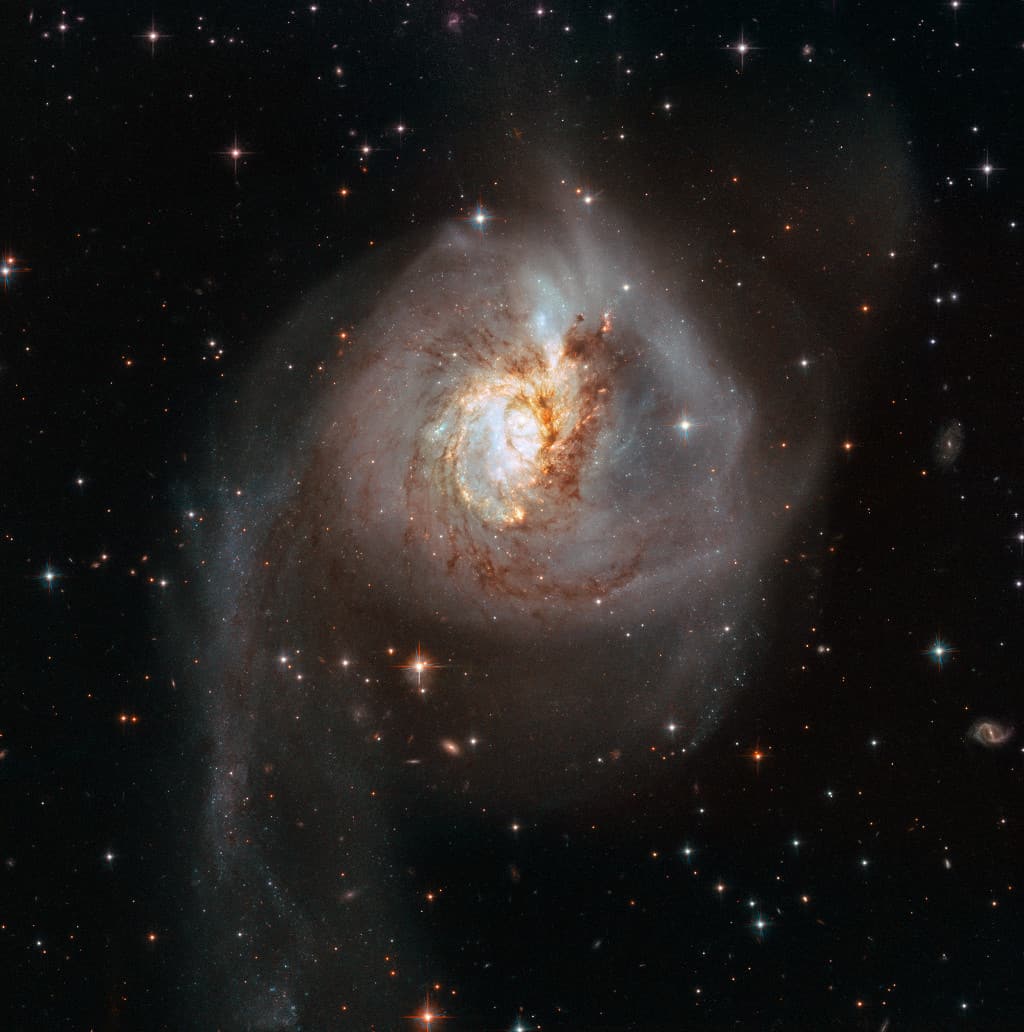Blog
Martin Abraham, better known as Chink Martin (June 10, 1886, New Orleans – January 7, 1981, New Orleans) was an American jazz tubist.
Martin played guitar in his youth before settling on tuba as his main instrument. He played with Papa Jack Laine‘s Reliance Brass Band around 1910, and worked in various other brass bands in the city in the 1910s. In 1923, he traveled to Chicago and played with the New Orleans Rhythm Kings with whom he made his first records. He also recorded guitar duets with Leon Roppolo, but these unfortunately were never issued. He returned to New Orleans with the Rhythm Kings in 1925, and made further recordings with them. He also played with the Halfway House Orchestra (with which he recorded on both tuba and string bass), the New Orleans Harmony Kings, and the New Orleans Swing Kings. In the 1930s, Martin worked as a staff musician at WSMB radio. He continued to play tuba for his entire career, though he also played and recorded on the double-bass (like many New Orleans tubists) from at least the 1920s onward. He played with dozens of noted New Orleans jazz musicians, appearing on record with Sharkey Bonano, Santo Pecora, Pete Fountain, Al Hirt, and others, and released one album under his own name on Southland Records in 1963.
more...Malian guitarist and vocalist Samba Touré. It’s a delight for guitar fans and lovers of what has been called desert blues, the music of northern Mali, Niger, Mauritania and the Western Sahara.
What sets Touré’s music a part is his use of traditional instruments such as the tama, the talking drum that plays a leading role throughout the album. Touré dedicated a love song to his wife in the title cut and also celebrates the late Zoumana Tereta, the musician that participated in many of his recordings playing the soku, a Wasulu fiddle. Zouman appears in the form of some samples of his performances.
more...This image from the NASA/ESA Hubble Space Telescope shows the rich galaxy cluster Abell 3827. The strange blue structures surrounding the central galaxies are gravitationally lensed views of a much more distant galaxy behind the cluster. Observations of the central four merging galaxies have provided hints that the dark matter around one of the galaxies is not moving with the galaxy itself, possibly implying dark matter-dark matter interactions of an unknown nature are occuring.
The central supermassive galaxy (ESO 146-IG 005) is clearly visible among its cluster companions as well as the remains of at least four nuclei that are being “digested” by the large galaxy. The central galaxy is thought to be the most massive galaxy in our local universe (out to about 1.5 billion light years).
more...Kenny Barron (born June 9, 1943) is an American jazz pianist, who has appeared on hundreds of recordings as leader and sideman and is considered one of the most influential mainstream jazz pianists since the bebop era.
Born in Philadelphia, Pennsylvania, Kenny Barron is the younger brother of tenor saxophonist Bill Barron (1927–1989). One of his first gigs was as pianist with the Dizzy Gillespie quartet. Barron was briefly a member of the Jazztet around 1962, but did not record with them.
He graduated in 1978 with a BA in Arts from Empire State College (Metropolitan Center, New York City).
He also co-led the groups Sphere and the Classical Jazz Quartet.
more...Lester William Polsfuss (June 9, 1915 – August 12, 2009), known as Les Paul, was an American jazz, country, and blues guitarist, songwriter, luthier, and inventor. He was one of the pioneers of the solid-body electric guitar. Paul taught himself how to play guitar, and while he is mainly known for jazz and popular music, he had an early career in country music. He is credited with many recording innovations. Although he was not the first to use the technique, his early experiments with overdubbing (also known as sound on sound),delay effects such as tape delay, phasing effects and multitrack recording were among the first to attract widespread attention.
His innovative talents extended into his playing style, including licks, trills, chording sequences, fretting techniques and timing, which set him apart from his contemporaries and inspired many guitarists of the present day. He recorded with his wife Mary Ford in the 1950s, and they sold millions of records.
Among his many honors, Paul is one of a handful of artists with a permanent, stand-alone exhibit in the Rock and Roll Hall of Fame. He is prominently named by the music museum on its website as an “architect” and a “key inductee” with Sam Phillips and Alan Freed. Les Paul is the only person to be included in both the Rock and Roll Hall of Fame and the National Inventors Hall of Fame.
Les Paul was born Lester William Polsfuss in Waukesha, Wisconsin, to George and Evelyn (Stutz) Polsfuss. His family was of German ancestry. Paul’s mother was related to the founders of Milwaukee’s Valentin Blatz Brewing Company and the makers of the Stutz automobile His parents divorced when he was a child. His mother simplified their Prussian family name first to Polfuss, then to Polfus, although Les Paul never legally changed his name. Before taking the stage name Les Paul, he also performed as Red Hot Redand Rhubarb Red.
more...Cole Albert Porter (June 9, 1891 – October 15, 1964) was an American composer and songwriter. Born to a wealthy family in Indiana, he defied the wishes of his domineering grandfather and took up music as a profession. Classically trained, he was drawn towards musical theatre. After a slow start, he began to achieve success in the 1920s, and by the 1930s he was one of the major songwriters for the Broadway musical stage. Unlike many successful Broadway composers, Porter wrote the lyrics, as well as the music, for his songs.
After a serious horseback riding accident in 1937, Porter was left disabled and in constant pain, but he continued to work. His shows of the early 1940s did not contain the lasting hits of his best work of the 1920s and ’30s, but in 1948 he made a triumphant comeback with his most successful musical, Kiss Me, Kate. It won the first Tony Award for Best Musical.
Porter’s other musicals include Fifty Million Frenchmen, DuBarry Was a Lady, Anything Goes, Can-Can and Silk Stockings. His numerous hit songs include “Night and Day“, “Begin the Beguine“, “I Get a Kick Out of You“, “Well, Did You Evah!“, “I’ve Got You Under My Skin“, “My Heart Belongs to Daddy” and “You’re the Top“. He also composed scores for films from the 1930s to the 1950s, including Born to Dance (1936), which featured the song “You’d Be So Easy to Love“; Rosalie (1937), which featured “In the Still of the Night“; High Society (1956), which included “True Love“; and Les Girls (1957).
Porter was born in Peru, Indiana, the only surviving child of a wealthy family. His father, Samuel Fenwick Porter, was a druggist by trade. His mother, Kate, was the indulged daughter of James Omar “J. O.” Cole, “the richest man in Indiana”, a coal and timber speculator who dominated the family. J. O. Cole built the couple a home on his Peru-area property, known as Westleigh Farms. After high school, Porter returned to the property only for occasional visits.
more...This new portrait of the bright star-forming region NGC 346, in which different wavelengths of light swirl together like watercolours, reveals new information about how stars form. NGC 346 is located 210,000 light-years away in the Small Magellanic Cloud, a neighbouring dwarf galaxy of the Milky Way. The image is based on data from ESA XMM-Newton (X-rays; blue), ESO’s New Technology Telescope (visible light; green), and NASA’s Spitzer (infrared; red). The infrared light shows cold dust, while the visible light denotes glowing gas, and the X-rays represent very hot gas. Ordinary stars appear as blue spots with white centres, while young stars enshrouded in dust appear as red spots with white centres.
more...William Royce “Boz” Scaggs (born June 8, 1944) is an American singer, songwriter, and guitarist. He was a guitarist and occasional lead singer with the Steve Miller Band in the 1960s, and in the 1970s gained fame with several solo Top 20 hit singles in the United States, including the hits “Lido Shuffle” and “Lowdown” from the critically acclaimed album Silk Degrees (1976), which peaked at #2 on the Billboard 200. Scaggs continues to write, record music, and tour.
Scaggs was born in Canton, Ohio, the eldest child of a traveling salesman. Their family moved to McAlester, Oklahoma, then to Plano, Texas (at that time a farm town), just north of Dallas. He attended a Dallas private school, St. Mark’s School of Texas, where schoolmate Mal Buckner gave him the nickname “Bosley”, later shortened to “Boz”
more...William Russell Watrous III (born June 8, 1939) is a jazz trombonist. He is perhaps best known by casual fans of jazz music for his rendition of Sammy Nestico‘s arrangement of the Johnny Mandel ballad “A Time for Love,” which he recorded on a 1993 album of the same name. A self-described “bop-oriented” player, he is well known among fellow trombonists as a master technician and for his mellifluous sound.
Watrous’ father, also a trombonist, introduced him to the instrument at an early age. While serving in the U.S. Navy, Watrous studied with jazz pianist and composer Herbie Nichols. His first professional performances were in Billy Butterfield‘s band.
more...Wilhelmina Goodson, known professionally as Billie Pierce (June 8, 1907 – September 29, 1974), was an American jazz pianist and singer.
Wilhelmina (Billie) Goodson was born on June 8, 1907 in her mother’s hometown of Marianna, Florida, United States, and grew up in Pensacola, Florida. She was one of six piano-playing sisters (including Ida Goodson and Sadie Goodson) whose mother and father (Madison H. Goodson and Sarah Jenkins Goodson) also played the piano.[2] There was a seventh daughter, Maggie, who died young. Billie was the second youngest of the girls; the order of the sisters from oldest to youngest went Mabel (b. 1899), Della (1901), Sadie (1903), Edna (1904), Billie (1907), and Ida (1909).
Goodson was never formally trained to read music. Both of her parents musicians, they played hymns and sang in the choir at the Baptist church where Madison Goodson was a Deacon. According to Billie, she was about two years old when she first started to play the piano.
Though her parents disapproved of ragtime, blues, and jazz, only playing religious music, Billie and her sisters were drawn to it. When Ms. Pierce was about ten years old, she and her sisters would go down to the Belmont Theater to listen to Ma Rainey, Ida Cox, and Bessie Smith when they passed through Pensacola, Florida. In 1922, when Ms. Pierce was almost thirteen, Bessie Smith passed through town again. Bessie’s pianist, Clarence Williams, suffered a heart attack and Ms. Pierce subbed in to played piano with Bessie Smith for two weeks at the Belmont Theater.
more...World Music on Flamenco Fridays
more...Marked by an unusually bright central region, swirling dust lanes, and far flung tidal tails, peculiar NGC 3256 is the aftermath of a truly cosmic collision. The 500 million year old clash of two separate galaxies spans some 100 thousand light-years in this sharp Hubble view. Of course when two galaxies collide, individual stars rarely do. Giant galactic clouds of molecular gas and dust do interact though, and produce spectacular bursts of star formation. In this galaxy clash, the two original spiral galaxies had similar masses. Their disks are no longer distinct and the two galactic nuclei are hidden by obscuring dust. On the timescale of a few hundred million years the nuclei will likely also merge as NGC 3256 becomes a single large elliptical galaxy. NGC 3256 itself is nearly 100 million light-years distant toward the southern sailing constellation Vela. The frame includes many even more distant background galaxies and spiky foreground stars.

This image, taken with the Wide Field Camera 3 (WFC3) and the Advanced Camera for Surveys (ACS), both installed on the NASA/ESA Hubble Space Telescope, shows the peculiar galaxy NGC 3256. The galaxy is about 100 million light-years from Earth and is the result of a past galactic merger, which created its distorted appearance. As such, NGC 3256 provides an ideal target to investigate starbursts that have been triggered by galaxy mergers. Another image of NGC 3256 was already released in 2008, as part of a collection of interacting galaxies, created for Hubble’s 18th birthday.
Harold Floyd “Tina” Brooks (June 7, 1932 – August 13, 1974) was an American hard bop, blues, and funk tenor saxophonist and composer.
Harold Floyd Brooks was born in Fayetteville, North Carolina, and was the brother of David “Bubba” Brooks. The nickname “Tina”, pronounced Teena, was a variation of “Teeny”, a childhood moniker. His favourite tune was “My Devotion”. He studied harmony and theory with Herbert Bourne.
Initially, he studied the C-melody saxophone, which he began playing shortly after he moved to New York with his family in 1944. Brooks’ first professional work came in 1951 with rhythm and blues pianist Sonny Thompson, and in 1955 Brooks played with vibraphonist Lionel Hampton. Brooks also received less formal guidance from trumpeter and composer “Little” Benny Harris, who led the saxophonist to his first recording as a leader. Harris, in fact, was the one who recommended him to Blue Note Records producer Alfred Lion in 1958.
more...Talmage Holt Farlow (June 7, 1921 – July 25, 1998) was an American jazz guitarist. He was nicknamed “Octopus” because of how his large, quick hands spread over the fretboard. As Steve Rochinski notes, “Of all the guitarists to emerge in the first generation after Charlie Christian, Tal Farlow, more than any other, has been able to move beyond the rhythmic, melodic, and harmonic vocabulary associated with the early electric guitar master. Tal’s incredible speed, long, weaving lines, rhythmic excitement, highly developed harmonic sense, and enormous reach (both physical and musical) have enabled him to create a style that clearly stands apart from the rest.” Where guitarists of his day combined rhythmic chords with linear melodies, Farlow placed single notes together in clusters, varying between harmonically enriched tones. As music critic Stuart Nicholson put it, “In terms of guitar prowess it was the equivalent of Roger Bannister breaking the four minute mile.”
Talmage Holt Farlow was born in Greensboro, in 1921. He taught himself how to play guitar, which he started when he was twenty-two years old. He learned chord melodies by playing a mandolin tuned like a ukulele. He said playing the ukulele was the reason he used the higher four strings on the guitar for the melody and chord structure, with the two bottom strings for bass counterpoint, which he played with his thumb. His only professional training was as an apprentice sign painter. He requested the night shift so he could listen to big band standards on the shop radio. He listened to Bix Beiderbecke, Louis Armstrong, and Eddie Lang. His career was influenced by hearing Charlie Christian playing electric guitar with the Benny Goodman band. He said he made his own electric guitar because he couldn’t afford one.
Farlow employed artificial harmonics and tapped his guitar for percussion, creating a flat, snare drum sound or a hollow backbeat like the bongos.His large, quick hands earned him the nickname “The Octopus”.
more...Frederic Galliano was born December 23, 1969 in Grenoble. He’s an eclectic musician who works with cutting edge electronic music, jazz and world music.
more...More Posts
- Daily Roots with Susan Cadogan
- Club Calabash 48 featuring mick laBriola
- The Cosmos with Strong Thermal Emission Velocity Enhancements (STEVEs)
- Stanley Cowell
- Kidd Jordan
- Blind Willie McTell
- John Dee Holeman Memorial
- World Music with Katerina Papadopoulou
- Daily Roots with Pinnacle Sound feat Marcus I & Fi
- The Cosmos with Sh2-273
- Ron Carter
- Maynard Ferguson
- Umm Kulthum
- Tyagaraja
- World Music with Diego Baliardo and The Gypsy Evolution
- Daily Roots with Everet Thompson
- The Cosmos with Abell 3827
- James Brown
- Jimmy Cleveland
- John Lewis


